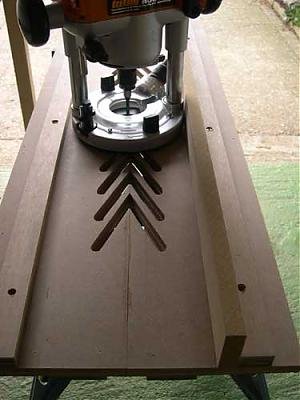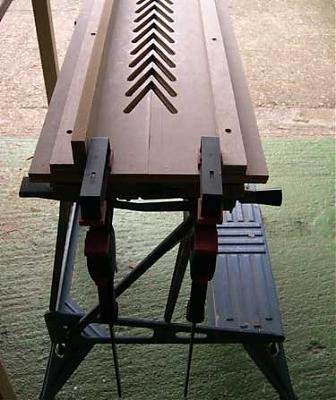I built Norm's Louvre Door jig, but was lucky enough to have been sent the "Jigs" programme that he did (as an .mpg file, now long-since gone), from which I made my version.
Instead of setting strips of ply in dados to act as a saddle for the two stiles, I decided to screw saddle strips to the underside. This now means that - as I had cut the chevrons wider than needed for the current use - I can now use the same jig for stock much wider than 3/4" - I'll just have to reposition the saddle strips underneath. Here's what I mean:
I thought about using a couple of straight-edge clamps on the jig face to set the routing distance for each operation, but decided that it would be a pain. Instead, I screwed on the outer limiting strips (again, so that I can re-use the jig for widths greater than 3/4" stock) and made a spacer to restrict the inner travel on each side. The spacer required was 3/4" for a 3/4" stile because the outer limiters were the same distance from each side. Here it is, in place for routing the right-hand slots:
Here it is ready to do the left-hand slots:
The jig works by clamping the two stiles into my WorkMate, then dropping the jig over them, aligning vertically and clamping:
Here's the result of the first test run on some scrap 3/4" ply:
Finally, here's the first sample dry-fitted. The custom panels will be made in hardwood, so I'm hoping for some good results now.
The jig was slightly easier to cut on the bandsaw than in Norm's version, because I've got a WoodHaven miter gauge which goes all the way round the angles and could be locked at 25 degrees (without the need to make an additional sled for the bandsaw, thank goodness!).
Ray






































